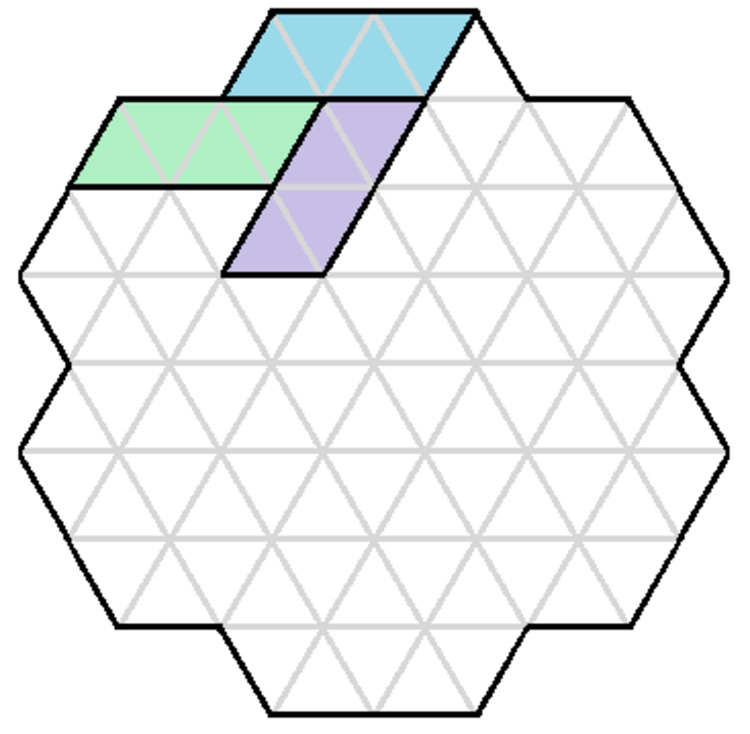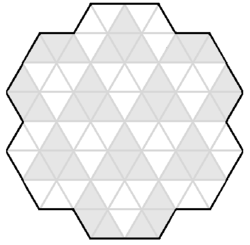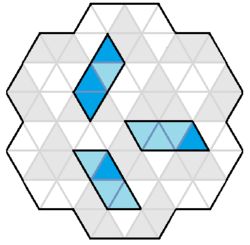Tiling A Snowflake
Is it possible to completely tile (without gaps or overlap) the following snowflake diagram with different rotations and reflections of straight segment tiles made up of four unit equilateral triangles?

This section requires Javascript.
You are seeing this because something didn't load right. We suggest you, (a) try
refreshing the page, (b) enabling javascript if it is disabled on your browser and,
finally, (c)
loading the
non-javascript version of this page
. We're sorry about the hassle.
2 solutions
Very nice! Different than my solution, too.
beautiful coloring !!
Color the area as follows with 4 2 gray triangles and 4 2 white triangles:

Then there are two types of straight tiles that can be placed on the board - one that covers 1 white triangle and 3 gray triangles, and one that covers 3 white triangles and 1 gray triangle:

Let x be the number of straight tiles that cover 1 white triangle and 3 gray triangles, and let y be the number of straight tiles that cover 3 white triangles and 1 gray triangle.
Since each straight tiles covers 4 triangles, and since there are 8 4 triangles, there are 4 8 4 = 2 1 total straight tiles, so x + y = 2 1 .
Also, since 4 2 gray triangles need to be covered, 3 x + y = 4 2 .
However, x + y = 2 1 and 3 x + y = 4 2 leads to ( x , y ) = ( 2 2 1 , 2 2 1 ) , a non-integer solution, which is not possible.
Therefore, the tiling is not possible .
There are 8 4 triangles in the snowflake so we need 2 1 tiles. Each tile covers three blue and one white triangle in the following colouring:
...but there are only 2 0 white triangles; so such a tiling is impossible.